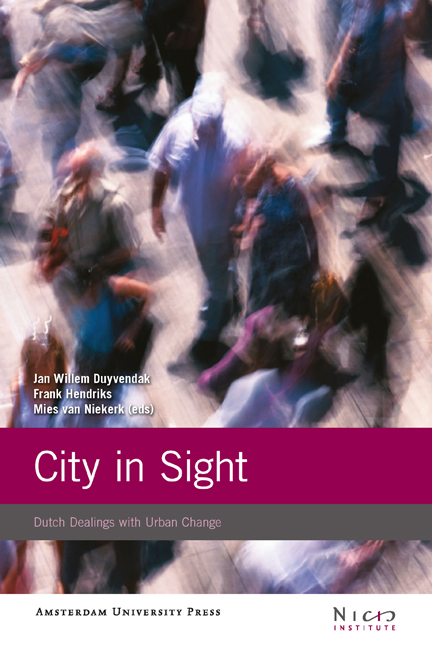Book contents
- Frontmatter
- Contents
- Acknowledgements
- Cities in Sight, Inside Cities: An Introduction 9
- Part I Urban Transformations and Local Settings
- Part II Urban Citizenship and Civic Life
- Part III Urban Governance and Professional Politics
- The Dutch Orange and the Big Apple: A Comparative Commentary
- References
- Notes on Contributors
- Index
The Dutch Orange and the Big Apple: A Comparative Commentary
Published online by Cambridge University Press: 19 January 2021
- Frontmatter
- Contents
- Acknowledgements
- Cities in Sight, Inside Cities: An Introduction 9
- Part I Urban Transformations and Local Settings
- Part II Urban Citizenship and Civic Life
- Part III Urban Governance and Professional Politics
- The Dutch Orange and the Big Apple: A Comparative Commentary
- References
- Notes on Contributors
- Index
Summary
It is always fascinating to read highly intelligent researchers applying apparently familiar conceptual tools to apparently similar problems, but in a different national context. The urban scholars of the Netherlands whose essays are gathered in this volume reflect thoughtfully on immigrant integration, inter-group relations, neighborhood trajectories, local and national urban development programs, and the nature of contemporary urban citizenship. Their work is informed not only by their own vigorous research tradition, but also by a shrewd and sometimes critical reading of the literature in the US.
Reflecting on these essays has been rewarding on at least three counts. Where the problems and conceptual tools really are more or less the same, these essays have heightened my understanding of the issues that face policy makers in both settings and suggested new ways for scholars in the US to research them. The essays on immigrants, inter- group relations, and immigrant integration programs probably offer the most direct comparisons. Where the problems or conceptual tools turn out, on closer inspection, not to be so similar, the distinctive aspects of the situations in the Netherlands are still revealing because they show how urban realities are not restricted by the boundaries implicit in North American approaches. In other words, while these concepts work well for us, they may fail to capture important aspects of similar processes going on elsewhere. This kind of discordance is more evident in the essays on ethnic residential concentration and segregation, mixed income housing, and public efforts to ‘improve’ neighborhoods. Finally, these situations also reveal how the ‘borrowing’ of concepts developed in the US national setting can be ill-fitting when applied to the case of the Netherlands, and perhaps Europe, even when the ‘borrowers’ think the terms fit well. Use of ideas like ‘the dual city’, ‘concentrated poverty’, and ‘segregation’ tend to display this trait.
Comparing the Orange and the Apple
So how similar are the urban situations of the Netherlands and the US? This question really makes no sense, because it compares a 16.5 million-person Dutch apple (in 34,000 square kilometers) to a 306-million-person bushel of mixed American fruits and vegetables (housed in 9,162 thousand square kilometers). To state the obvious, the US is a highly varied, continental-scale nation, while the Netherlands is small, compact, and relatively homogeneous.
- Type
- Chapter
- Information
- City in SightDutch Dealings with Urban Change, pp. 267 - 276Publisher: Amsterdam University PressPrint publication year: 2009



